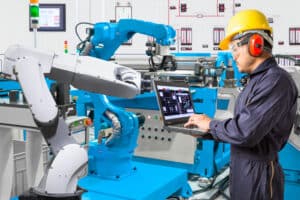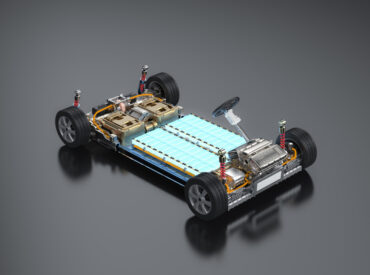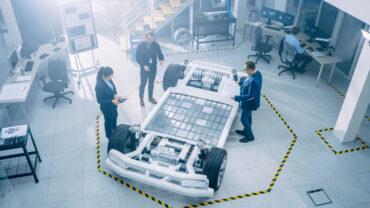
Virtual commissioning and digital twins can help automakers and their Tier 1 parts suppliers ensure that their human-robot collaboration projects achieve their desire objectives without posing a safety threat to the human operators.
Many of the goals or objectives of smart manufacturing in the automotive industry, like improving operational efficiencies and reducing waste and energy use require the use of new technologies. One area that is increasingly getting attention is the use of AI and collaborative robots (cobot). Specifically, many automakers and their tier 1 parts suppliers are exploring or expanding the field of human-robot collaboration (HRC).
Certainly, manufacturers have used industrial robots for decades. They were typically tightly programmed to perform limited or specific tasks. What’s new is that today’s generation of robots are smarter and more autonomous. Many have vision systems and image analysis capabilities and can take independent actions based on the situation presented to them. For example, an intelligent robotic system could see that a part on a production line is in an incorrect orientation, move the part into the correct orientation, and continue an assembly task.
Another new aspect to the use of intelligent robotics is human collaboration. Human-robot collaboration teams robots with human counterparts. There are several distinct types of collaborative work that such systems can perform. Different interactions include:
Co-existence: In this scenario, the human and robot work independently on different tasks. An example is a robot lifting heavy parts and assembling them along a production line while the human provides oversight and quality control.
Synchronization: In this scenario, the human and robot each perform different dependent tasks that must be done in a certain sequence. The two need to interact with each other to ensure the operation stays in synch. An example is when a human operator’s job is to load a machine with parts or raw materials for the robot to perform a specific manufacturing task along a production line. The human and the robot must exchange information for this to work. The human must let the robot know the needed parts are loaded, while the robot must inform the human when it is low on parts or materials.
Collaboration: In this scenario, the human and robot work closely together. The action one has an immediate impact on the other. Such interactions required a high level of communication and coordination between the two. An example of this type of interaction is when a human operator and robot work together to assemble a complex component. The robot might be responsible for lifting a heavy part into place or precisely positioning a part. And the human would perform more nuanced aspects of the task, such as aligning parts.
In a collaborative environment, humans and robots must continuously interact. That might involve the robot alerting the human (via lights, text on a control screen, or other means) that a step in a chain of events is done. Comparably, the human must exchange information, letting the robot know one of the human’s steps is done or the robot needs to take an action. That might be done by pressing a button, checking a box on a console screen, or articulating it to the robot via a voice command.
See also: Digital Twins and Other Tech Enable Virtual Commissioning
Human-robot collaboration, virtual commissioning, and digital twins
Human-robot collaboration requires that robots be able to perform a wide range of tasks, adapt to different environments, and work alongside humans without posing a safety threat.
Advanced planning is needed to ensure that humans and robots work together productively. Their moves need to be orchestrated. And there often needs to be constant refinement of the interactions in the actual deployment environment. These are all areas where smart manufacturing can help automakers and their tier 1 parts suppliers.
To that end, virtual commissioning is essential. Virtual commissioning makes use of digital twins and simulations to model, optimize, and manage assembly processes before they are physically implemented. The work typically uses digital twins and simulation models that make use of advanced analytics and artificial intelligence.
Virtual commissioning allows manufacturers to try different placements of the robot and plan and test interactions between the human and the robot. The work can help identify things that need to be changed before building the systems or putting them in place in a work cell, production line, or factory.
A digital twin representation of the human-robot collaboration can be used to train human operators before the equipment is installed. Such virtual on-the-job training can provide the equivalent of real-world experience before the human ever touches or interacts with the robot. That valuable knowledge obtained virtually, in turn, enhances productivity gains and safety.
The same digital twin of a human-robot collaboration can be used to monitor operations once the system is deployed. Data about the HRC interactions can be fed back into a digital twin to look for potential safety problems and find ways to fine-tune the interaction to improve operations.







